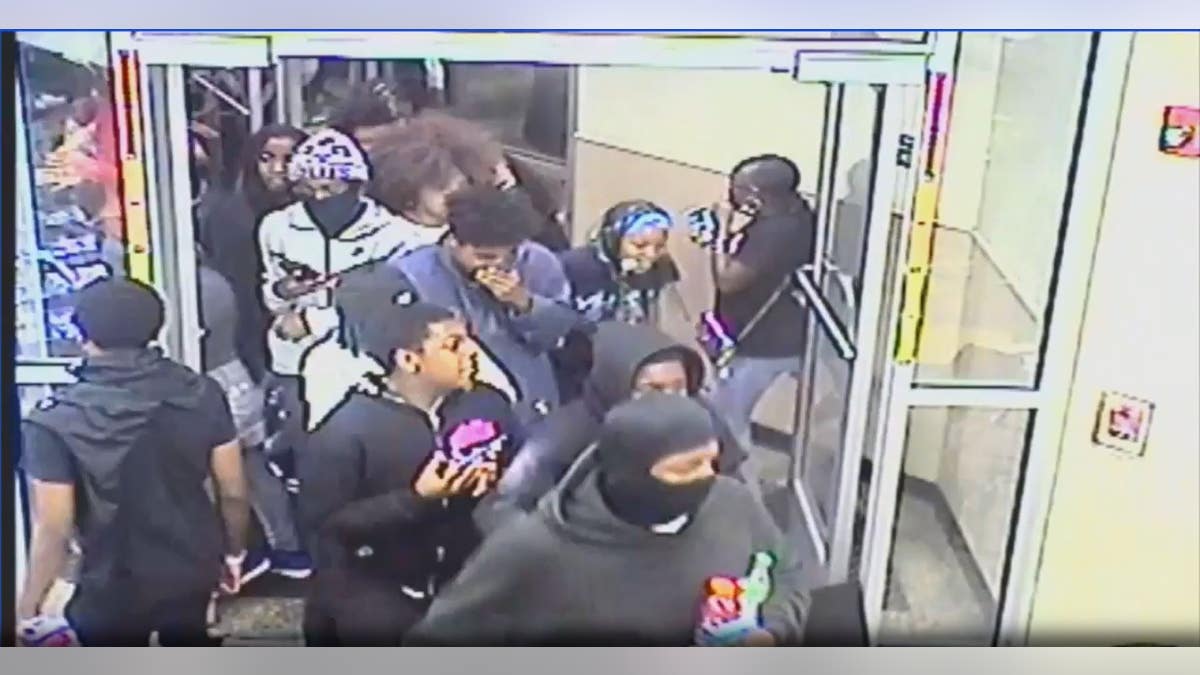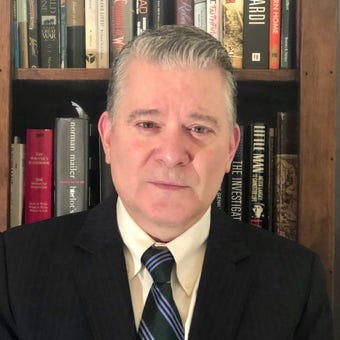Saying rising crime is a result of cashless bail is ‘jumping the gun’: David Carlucci
Former N.Y. State Sen. David Carlucci, D, defends cashless bail despite rising crime on 'America Reports.'
"RUN, HIDE, OR FIGHT" screamed the headlines, regarding a recent shooting near NYU’s Brooklyn campus. The quote was culled from an urgent text school officials broadcast to students during the incident.
Which must’ve felt all-too familiar to many; as reported by NYU’s own student newspaper, a month earlier a woman was shot dead in front of one of the school’s dorms (University Hall, $17,908 a year for a shared double).
It’s not just NYU. Across the country, as urban crime rates rise and woke prosecutors pursue illusory "criminal justice reforms," a wave of violence has beset some of our nation’s premier universities. It’s a phenomenon playing out in headlines around the nation – but which has gained little media notice.
SLAIN UCLA STUDENT BRIANNA KUPFER'S ALLEGED KILLER PLANS TO REPRESENT HIMSELF AT TRIAL
One need not look far for a trend – let’s roll on from NYC, south and west:

A group of about 100 juveniles looted a Wawa store in Philadelphia, September 24, 2022. (Philadelphia Police) (Philadelphia Police)
Poughkeepsie, NY: "Father of Marist College student is fatally shot at NY hotel during school’s ‘family weekend’"
Atlanta, GA: "Three students among those injured in shooting near CAU’s campus homecoming weekend"
Chicago: "College Student Shot Near 65th and Stony Island"
Denver: "Juvenile shot, killed near DU campus in Denver"
Washington State: "4 injured in University District shooting were UW students"
Berkley, California: "Man killed in shooting near UC Berkeley campus identified"
Vague language and the predictable bureaucratic wranglings in Washington have left the well-intentioned legislation a poor source for determining school danger.
I could go on. And that’s just October.
Concerns about campus crime are nothing new. What many do not realize – unless perhaps your kids are heading off to college – is that college-related crime in America has been, for some time now, tracked. The 1990 Clery Act, passed after a student was raped and murdered 2 in her college dorm room, was designed to force colleges to provide an annual snapshot of criminal activity in and around their campuses.
The problem, however, has been in the interpretation of the Act. Vague language and the predictable bureaucratic wranglings in Washington have left the well-intentioned legislation a poor source for determining school danger.
In many instances, the reported numbers simply defy logic. For instance, Columbia University reported that the school had no aggravated assaults in 2021, and only 4 in the last three years. But NYPD’s CompStat numbers in fact show that the 26th Precinct, which encompasses most of Columbia University, had 130 felony assaults last year alone. Two Columbia University students have in fact been murdered in separate incidents since December of 2019 – with neither incident appearing in the school’s annual Clery reports.
Similarly, the top five colleges in Philadelphia have reported no murders for last year – despite the fact that the city set an all-time murder record in 2021.
While these schools may be in technical compliance with the Act’s reporting requirements, clearly, these numbers are missing something. They just do not give parents an accurate portrait of where their children will be attending school.
Edward Davis, former Police Commissioner of Boston, a city almost indistinguishable from the many colleges it contains, describes the Clery Act as "confusing and muddled" and the implementation of the Act as "disconnected from its original design." It’s no wonder most parents have never even heard of the law.
A better metric for campus safety is a simple review of the crime trends in the relevant areas – and the growing reactions from parents, public officials, and the schools themselves.

Families are poorly prepared for campus crime thanks in part to poor information. (Photo by Andri Tambunan / AFP) (Photo by ANDRI TAMBUNAN/AFP via Getty Images) (Photo by ANDRI TAMBUNAN/AFP via Getty Images)
According to the Chicago PD, in a single week in October, there were four shootings and 15 robberies in the district immediately south of the University of Chicago campus (in a state set to implement a "no cash bail" policy). At the University of Virginia, Charlottesville, police have reported over 250 "shots fired" incidents in the city so far this year – on track to likely double 2021 numbers.
In Baltimore, things have reached a point where Johns Hopkins University has elected to form its own police force. While awaiting its implementation, one of the medical school’s professors of surgery was carjacked and shot on his morning commute. (Nonetheless, students have protested vociferously against an increased security presence).
In fact, just during the writing and researching of this article, there were literally daily reports of campus-related shootings: Monday, October 24, University of Cincinnati; Tuesday, Marshall University, (West Virginia), San Diego State University, and Agricultural & Technical University (North Carolina); Wednesday: Northern Virginia Community College. Five incidents in three days.
And as we begin the new month? November 1, a woman shot and killed – The University of Cincinnati again.
What on earth is going on?
Parents are asking the same question. In response to a reported 45% crime surge surrounding the campus, a group of 1,800 parents from the University of Minnesota formed what is in effect an ad hoc public watchdog group to oversee security.
In liberal Berkeley, The Berkeley Scanner reports that parents have organized a pressure group to force university and local officials to do more about campus crime. As a result, the school – hardly a bastion of aggressive policing – just hired a private security firm.
And a parent group at Philadelphia’s Temple University has likewise hired a private security company to help keep their kids safe – footing the bill themselves.
In Baltimore, things have reached a point where Johns Hopkins University has elected to form its own police force.
CLICK HERE TO GET THE OPINION NEWSLETTER
Clearly, the schools are feeling the heat. Around the country, many are taking steps like increasing public safety personnel, instituting escorts for students, adding neighborhood watch programs, and installing cameras and better lighting. Many also seek closer working relationships with local police – even as their students call for police defunding.
It’s a necessary response to a trend that, if left unchecked, could allow the college experience that is the foundation of adult education in this country to slip away; just another victim of the progressive "defund" movement so in vogue in our cities.
CLICK HERE TO GET THE FOX NEWS APP
"My son is intent on going to NYU," one parent tells me. "Then I hear the daily craziness in New York. People getting shot and pushed in front of trains. It’s a great school, but I start to ask myself: Is it worth it?"
It’s a question more and more parents are being forced to ask.



